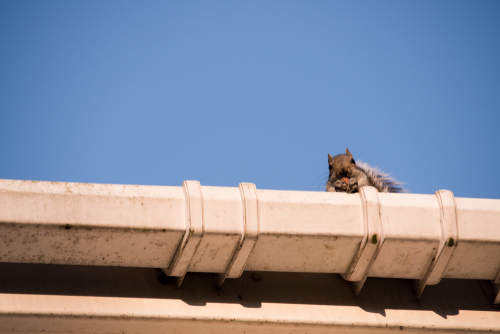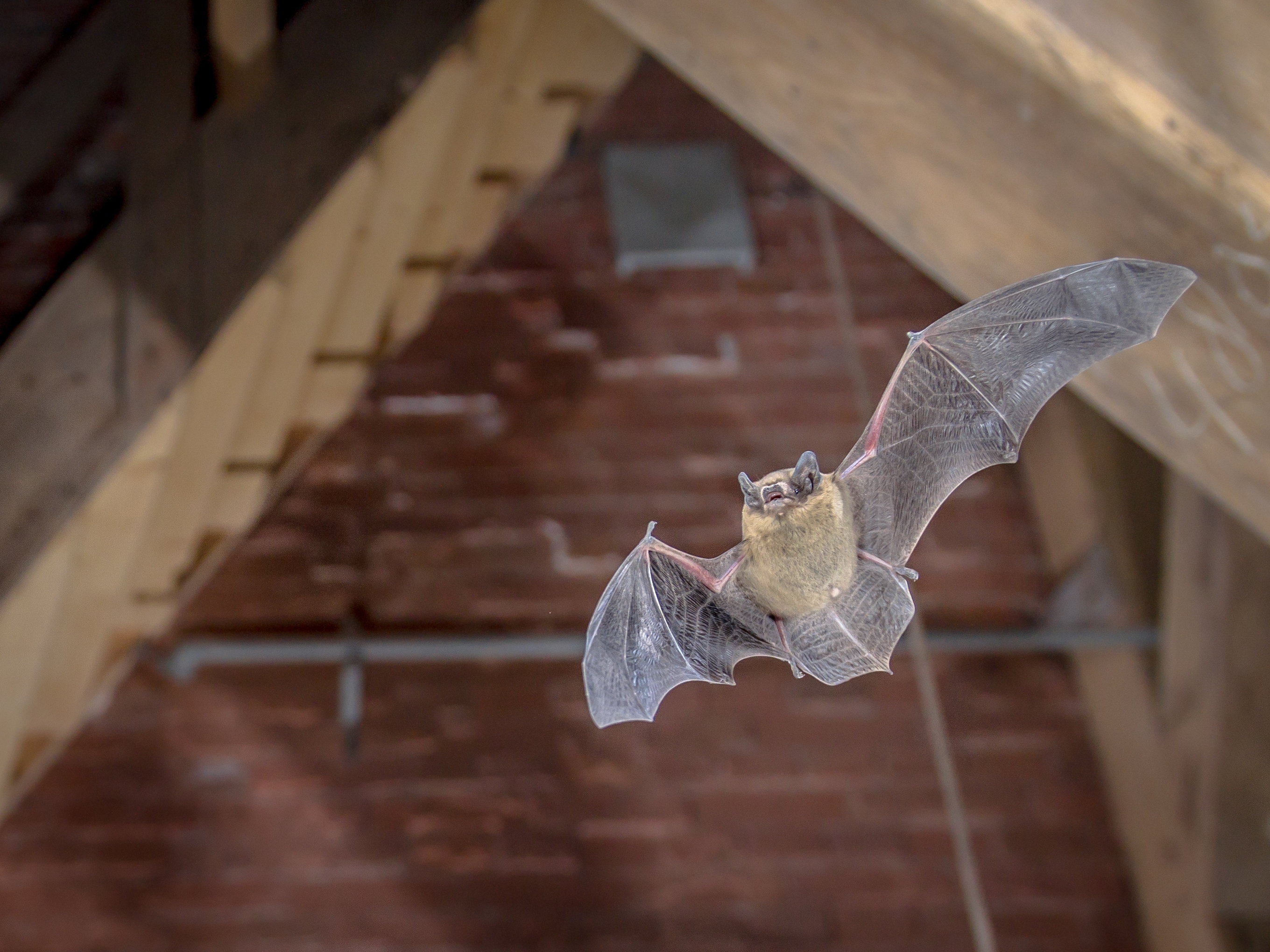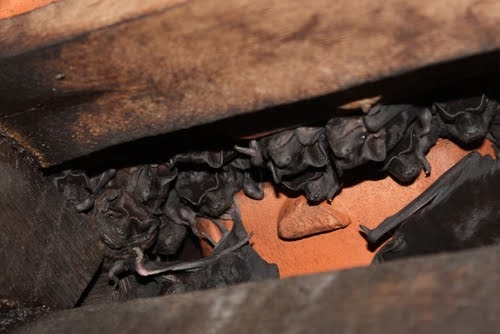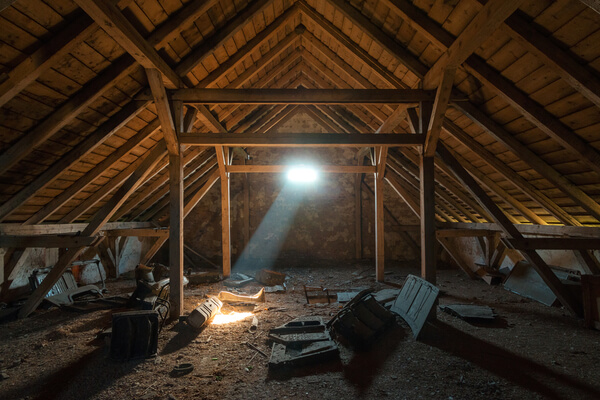Hearing strange noises (like scratching sounds) can be unnerving. Depending on the type of noise and the time of day, there are several wildlife pests you could be dealing with. It’s important to get to the bottom of your wildlife problem as soon as possible; wildlife inside your home can pose significant health risks and cause considerable damage.
Instead of attempting to handle infestations on your own, always utilize professional services for the removal of animals in the attic. But first, let’s find out what animal has set up shop in your home.
What Animal is in My Attic?
If you find yourself thinking, what’s living in my attic? Or wondering, is there a raccoon in my attic? It's essential to identify which pest is causing the racket before the situation gets any worse.

I Think There are Raccoons in My Attic. What Should I Do?
.jpg?r=hLlW5qQtQ+Q=)
If you suspect you have raccoons in your attic, you’re probably ready to get them out. Here’s how to tell if raccoons are your upstairs roommates:
Early Morning Noises
Raccoons are notorious nocturnal foragers. They leave their den at dusk and return early in the morning. If you’re hearing noises in your attic early in the morning or hear scratching in your ceiling, it’s possible you have a raccoon living in your attic. Raccoons are capable of causing quite a ruckus, from light thumping to full-on destructive noises.
Noises During the Day
Conversely, chattering sounds during the day could indicate the presence of baby raccoons nesting. Recognizing these raccoon noises in the attic can help you detect their presence and take appropriate action promptly.
Damage
Raccoons are known to rip basketball-sized entry holes in roofs, typically gaining entry through a torn vent or soffit along your roofline.
Signs It’s Squirrels in Your Walls & Attic

Sometimes you may hear squirrels coming in and out during the day to drop off food to store in your attic. They are especially active in the early morning and may be heard returning in the evening for the night. You may hear nuts rolling on the floor or being stuffed down into your walls. Most squirrels sleep at night and tend to be quiet all night long.
Squirrel habits and sounds vary depending on the species:
1. Red Squirrels
Red squirrels can be identified by their deep reddish color, territorial behavior, and smaller body size. They can cause large amounts of damage in a short time and even get into your home’s wiring. Red squirrels produce a lot of gnawing, scratching, and screeching sounds during the day. They are known to access ground level or even underground entry points to get into your home.
2. Flying Squirrels
If you hear soft thumping sounds at night, it may be flying squirrels. Flying squirrels are the only nocturnal species of squirrel. They are known to jump from rafter to rafter and are commonly mistaken for mice in the attic. These squirrels commonly use existing cracks or gaps in your roof and ridge vents for entry points.
3. Gray Squirrels
Gray squirrels are noisy animals capable of loud squeaking, scratching and chewing noises. These squirrels are very active chewers, and are considered one of the biggest chewers amongst squirrel species. While they might use existing holes and cracks in your roof, soffit, and fascia to enter, they are also able to chew their way into entry points. Gray squirrels are known to chew the edges of wood trim, gable vent louvers, and even vinyl siding.
How to Tell if You’ve Got Bats in Your Attic

Bats are the biggest health risk among attic dwellers. Bat guano is toxic to human beings. If you have had bats in your attic for any length of time, make sure a professional animal clean up service removes all the accumulated waste.
What Do Bat Noises in Your Attic Sound Like?
Bat noises include wing flutters, scratching, squeaking and clicking. Bats typically leave their roost at dusk to hunt and return at dawn. They can enter through tiny, dime-sized holes that may be difficult to notice by the untrained eye.
You Could Be Hearing Bird Noises in Your Attic

Chirping sounds in your attic or ceilings are a sure sign that birds have gotten into your home. Young birds may chirp all day long. Fluttering and banging sounds are also common. If you find dead birds in your attic, it is due to the fact that they will commonly get stuck in voids and cannot get out. They will also sometimes fly into walls and supports when confined to small spaces.
Birds can also find their way into vents and will nest above bathroom ceiling fans. A wildlife removal expert can humanely remove birds from these difficult areas.
Rodent Infestation: Rat & Mouse Noises in Your Attic
Mice are nocturnal and become loud when everything else is quiet. As a result, they are sometimes mistaken for larger animals. Mice and rats make chewing, scratching and squeaking sounds in ceilings and walls. In attics they often make their nests along access panels and hatches where the temperature is warmer.
If you suspect a rodent infestation, get in touch with our pest control partner. Plunkett’s can remove and prevent rodent infestations in your home.
How to Get Rid of Critters in the Walls & Attic
Wild animals can be dangerous and unpredictable. Hiring a professional is the best way to remove wildlife from your home. DIY measures can be ineffective and even dangerous. Most wildlife specialists, like Varment Guard, offer a full range of services like:
- Clean up
- Roof or siding repair
- Insulation removal and replacement
- Work with home insurance companies
- Waste removal
- Dead animal removal
- Prevention
Looking for Effective Attic Wildlife Removal?

Don’t let those unsettling scratching noises in the attic go on another day. Contact Varment Guard. We know how to safely remove animals from your home and how to fortify your space against future intrusion!









